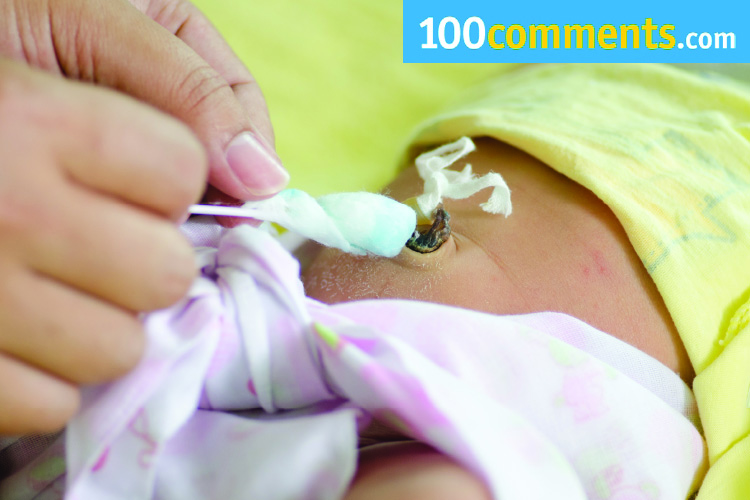Unborn babies receive all the nourishment they need via the placenta which is attached to their mother’s uterus. This placenta connects to the baby by an umbilical cord attached to the little one’s navel. At birth, this cord is clamped and cut off as closely as possible to the baby, leaving behind the umbilical stump which will dry up and eventually fall off.
Care has to be taken to avoid infections to this stump while it’s waiting to fall off. So, in the meantime, here are some ways to care for it.
Table of Contents
Keep it clean and dry
If the stump appears dirty or sticky, clean it gently with a soft, absorbent washcloth and plain water. It used to be that parents were instructed to use alcohol on the umbilical stump during diaper changes, but new research has pointed out that the stump will heal faster without it. In any case this piece of information is meant to enlighten, so do follow the instruction given to you by your doctor or midwife in regards to your baby’s umbilical stump care.
Expose the stump to fresh air as much as possible to help it dry up quickly. Keep the front of your baby’s diaper folded down to avoid covering the stump and also to keep urine away from it.
Dress your baby appropriately
To help the umbilical stump dry up and fall off faster, keep your baby comfortable in loose clothing. Avoid dressing your baby in bodysuit-style clothing or onesies. These clothing types tend to have poor air circulation. Also, avoid clothing that are too snug around the tummy area.
The aim is to air out the umbilical stump as much as you can, so that it will have a better chance of healing quickly.
No tubs baths for now
To avoid infections, stick to sponge baths for now and avoid placing baby in a bath tub. Once baby’s umbilical stump has fallen off and the wound has healed completely, you may begin to give your little bundle his or her tub baths.
Resist pulling off the stump
Even if it looks like it’s hanging by a thread, avoid pulling off the stump! Your baby’s skin is not as resilient yet and this may led to unnecessary wounding and infections. Allow the cord to dry off on its own and heal naturally.
Umbilical cord stump infection
Infection of the umbilical cord stump must be taken seriously, for it can result in a life-threatening infection called omphalitis.
Signs of infection include the following:
- The base of the stump appears red or swollen
- The base still bleeds after the first couple of days
- The stump oozes yellowish or white pus
- The stump produces a foul smelling discharge
- Your baby seems to be in pain when you touch the umbilical stump area
Consult your doctor if you notice any of the above signs. You should also consult the doctor if your baby’s umbilical cord is actively bleeding. Active bleeding in the umbilical cord means that when a drop of blood is wiped away, another drop appears.
When the stump falls off
When a baby’s umbilical stump falls off, a little bleeding might occur. However, it’s not supposed to be oozing of pus and neither should the surrounding skin be red and swollen. If any of these happen, do consult your doctor for they may be signs of infection.
Will baby have an innie or outie?
For some reason, more humans prefer to have an ‘innie’ navel compared to an ‘outie’. There is actually no way to predict what a baby will end up with. In some beliefs, taping a coin or other flat object over a baby’s navel will help produce an ‘innie’, but there is very little physical proof and absolutely no scientific reference of this.
















